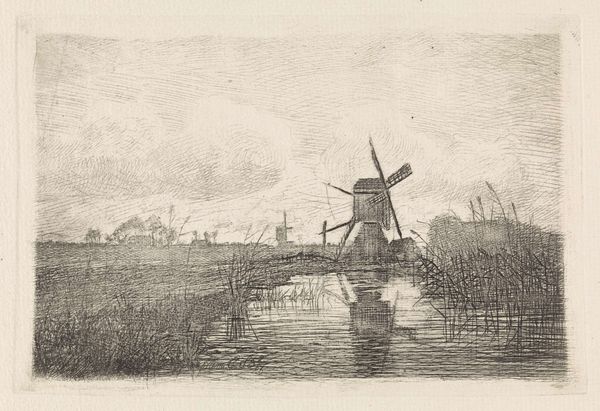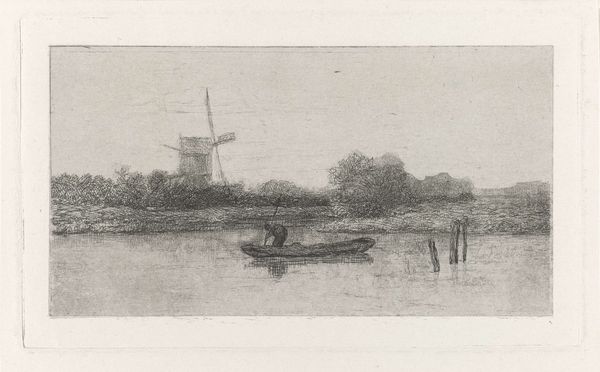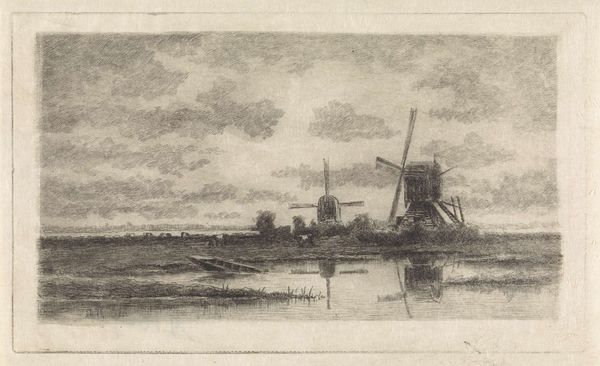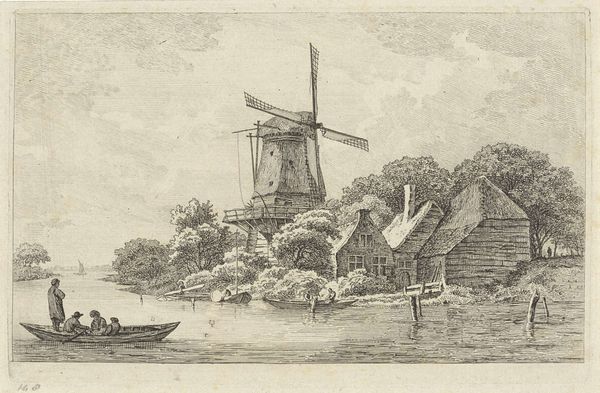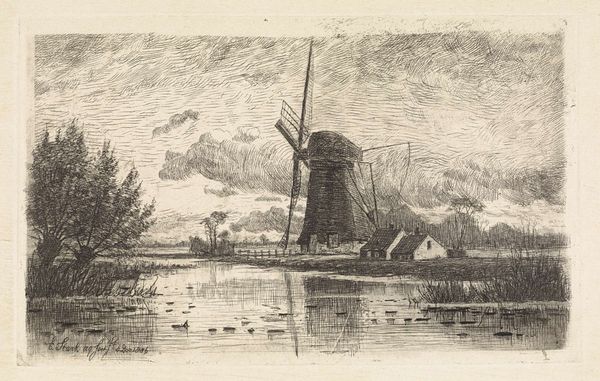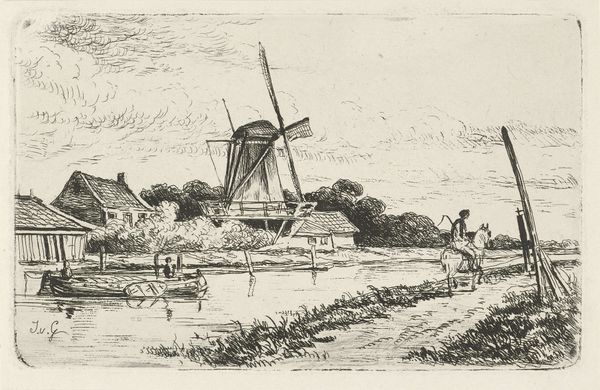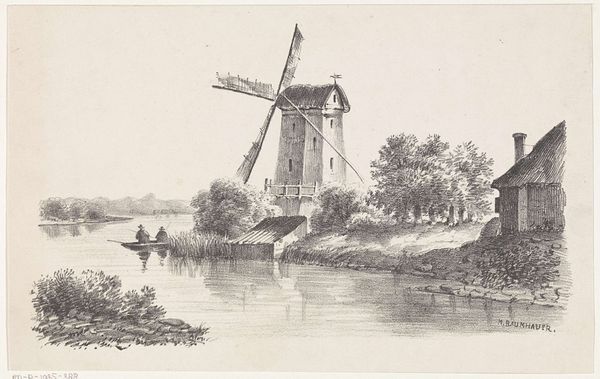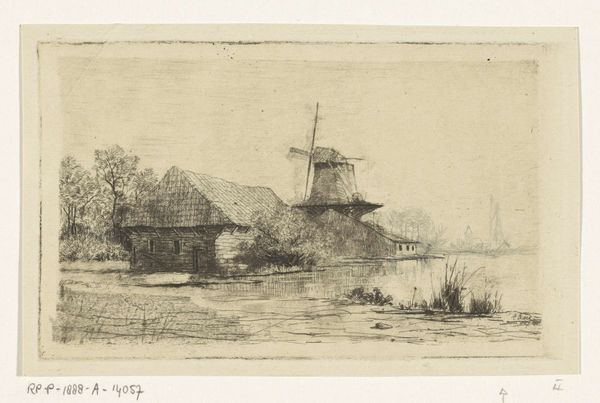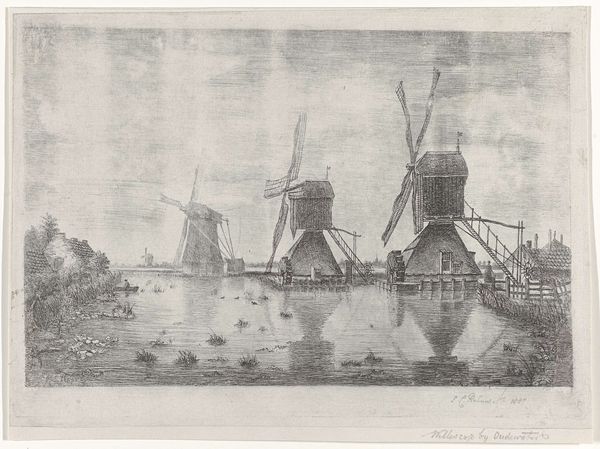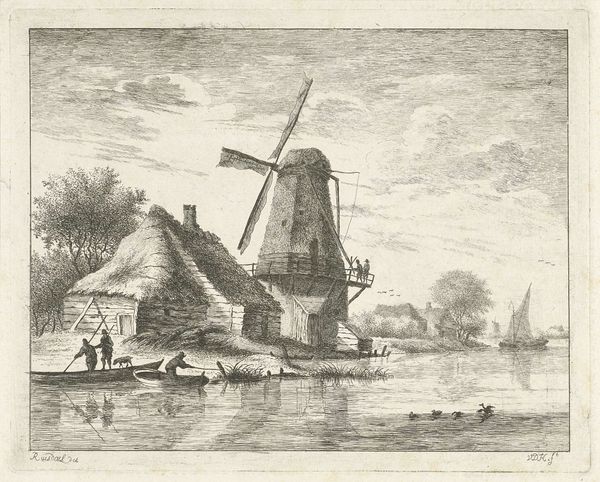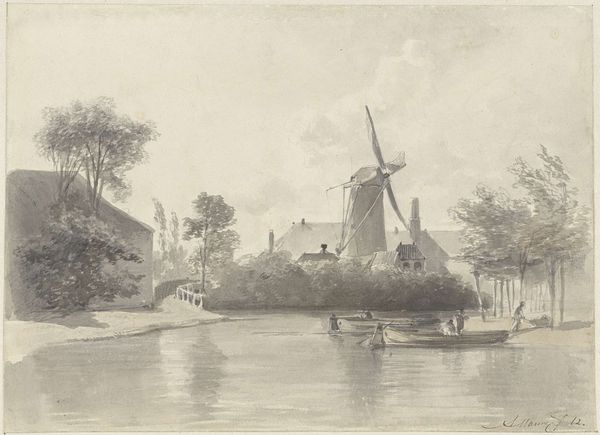
print, etching
# print
#
etching
#
landscape
#
realism
Dimensions: height 122 mm, width 196 mm
Copyright: Rijks Museum: Open Domain
Editor: Elias Stark’s etching, "Molen te Baambrugge," possibly from 1886, captures a windmill in a serene landscape. It's a strikingly peaceful image. I’m curious about what lies beneath the surface of this seemingly simple landscape. What do you see in this piece beyond the idyllic scene? Curator: The tranquil scene is deceptive. Consider the historical context: the late 19th century saw rapid industrialization, which threatened traditional ways of life. A windmill, like the one Stark depicts, becomes more than just a structure; it’s a symbol of a vanishing past, of Dutch heritage resisting the encroachment of modernity. How might the print have been received in a society grappling with such changes? Editor: That's a really interesting point! I hadn't considered the social anxieties of the time. It makes the scene feel more charged somehow, like a quiet act of preservation. Curator: Exactly. Furthermore, note the medium: an etching, a print. These were readily reproducible and therefore more accessible. So, who was Stark trying to reach with this imagery, and what message was he trying to convey about the changing Dutch landscape and national identity through wider distribution? Editor: So, by choosing printmaking, he wasn’t just creating art, he was also engaging in a kind of visual activism? Making a statement about what was worth preserving in the face of progress? Curator: Precisely. Art rarely exists in a vacuum. It's in constant conversation with its social, political, and economic environment. Stark is positioning the traditional Dutch landscape as something worth remembering, perhaps even fighting for, through its visual accessibility. Editor: That’s completely transformed my understanding. I now see "Molen te Baambrugge" not just as a pretty picture, but as a culturally potent symbol. Curator: Indeed. Considering art’s role in the broader societal dialogue always opens up new avenues of interpretation.
Comments
No comments
Be the first to comment and join the conversation on the ultimate creative platform.
